 |
Please display it as a web page clicking here when it is not correctly displayed. |
 |
|
 |
|
|
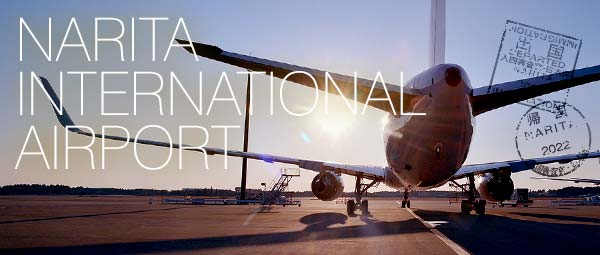 |
|
|
|
|
 |
|
|
|
Greetings from the Narita Airport email newsletter editorial office.
Hi everyone! How is your New Year?
In this, our first issue of 2022, we are going to take a look some facilities that help aircraft to land safely. It gets a bit technical but please stay with us to the end! |
 |
 |
 |
 |
 |
 |
 |
 |
| ・ |
What ground facilities help aircraft to land safely?! |
|
 |
 |
 |
|
 |
 |
 |
 |
 |
 |
| ・ |
Vote now for World's Best Airport! |
|
 |
 |
 |
|
 |
 |
 |
 |
 |
 |
| ・ |
Bamboo Airways Launched Hanoi Service on 25 January 2022! |
| ・ |
Aero Mongolia Launched Ulaanbaatar Service on 4 January 2022! |
| ・ |
Notification of free PCR test and antigen quantitative test for customers heading to Okinawa |
| ・ |
Important: Notice Concerning COVID-19 (Subject to continuing changes) |
|
 |
 |
 |
|
 |
 |
 |
 |
 |
 |
| ・ |
Monthly Traffic Statistics (2021) |
|
 |
 |
 |
|
 |
|
 |
 |
 |
 |
 |
What ground facilities help aircraft to land safely?! |
 |
Have you ever imagined how pilots land their aircraft safely? Imagine just once what it would be like to be a pilot.
There are many factors that assist aircraft to land safely, one of which is air traffic control. Basically, aircraft cannot land without permission from air traffic control. They give the instructions that help pilots to land. Aeronautical lights are another important element that contribute to safe landings. The lights are extremely important for ensuring a proper approach to the runway. You have probably seen the glittering runway lights from their cabin window when on board an aircraft.
There are many other elements that help to ensure safe landing but today, we are going to focus on the ILS (Instrument Landing System). You might never have heard of ILS and think that this all sounds a bit technical. But keep reading to the end and I am sure you will find some interesting facts. |
 |
| Runways at Narita Airport |
 |
 |
 |
Before we start into the ILS, let's take a quick look at the runways at Narita Airport. We have two runways. Runway A is 4,000 meters long and Runway B is 2,500 meters. In fact, Runway A is the longest in Japan. Both runways are 60 meters wide.
Pilots must land safely within those 60 meters.
So, do pilots land the aircraft visually all the time? |
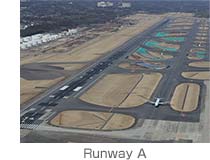 |
 |
| How do pilots land their aircraft? |
 |
 |
 |
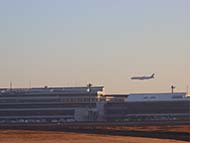 |
To begin with, there are two types of flight rules. They are Visual Flight Rules (VFR) where the pilot lands the aircraft using eyesight only but following air traffic control instructions, and Instrument Flight Rules (IFR) where the pilot follows air traffic control instructions but uses instruments in the cockpit which receive signals from the instrument landing system. |
 |
With VFR, pilots watch for other aircraft and obstacles and use their discretion to avoid collisions, called "see and avoid". With this method, pilots make their runway approach and landing visually.
In contrast to that, pilots use their instruments and follow air traffic control instructions under IFR. All aircraft arriving and departing Narita basically use IFR. ILS is central to IFR approaches and landings. When flying IFR, pilots rely on this ILS for landing rather than their own eyes.
So let's move onto this mystical ILS. |
 |
| How does ILS help aircraft to land? |
 |
 |
| ILS facilities emit radio waves to guide approaching aircraft to the correct runway approach path. These radio waves indicate to the pilots the correct course they should take to approach their runway and in doing so, help them to land safely. |
 |
 |
ILS consists of three components and each emits different radio signals.
The first of these is the "localizer". Localizer signals indicate the approach direction. The signals let the pilots know if their present course is left or right of the runway centerline. |
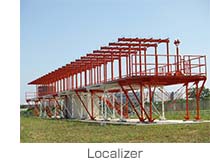 |
 |
 |
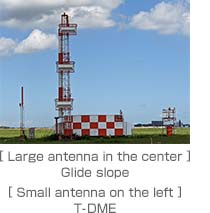 |
The second component is the "glide slope". Glide slope signals indicate the angle of approach to the runway. This helps the pilots to approach the runway at the correct angle. So, what is the correct angle of approach? Do you know? The answer is . . . . . . . 3 degrees. This might be a little different at some airports but most are about 3 degrees. |
 |
The third ILS component is the "T-DME". This sends a signal indicating the distance of the aircraft to the runway threshold. The signals let the pilots know how far they are from the touchdown point.
So, how are these ILS signals visualized in the cockpit by the pilots? They appear as horizontal and vertical bars in the instrument panel in front of the pilot where they can reference them. The horizontal bar represents the localizer and the vertical represents the glide slope. The pilots maneuver the aircraft so that the horizontal and vertical bars meet exactly at the center of the screen to form a precise cross. This enables the pilots to confirm that they are on course for approach and on a 3-degree descent angle to the runway. |
 |
| ILS is a key component at Narita Airport |
 |
 |
 |
| As we have just explained, ILS uses radio waves to assist aircraft to land but the great thing about it is that it works with instruments in the aircraft cockpit to keep the pilots on a correct approach course. That means that even in poor visibility during bad weather, pilots are able to use their instruments to maintain a correct approach and land safely. Narita Airport is particularly prone to fog. In low-visibility heavy fog, the ILS signals enable aircraft to land safely. ILS is an extremely important facility at fog-prone Narita Airport. |
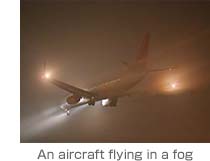 |
 |
| What did you think? Some of the technical terms might have made it a bit difficult but I would be delighted if you were able to find out a little more about the facilities that assist landing safety and, of course, our airport. |
|
 |
 |
 |
 |
 |
Vote now for World's Best Airport! |
 |
Voting for the "World Airport Awards 2022" conducted by SKYTRAX, an aviation service research company based in the United Kingdom, has started.
The World Airport Awards began in 1999, when SKYTRAX launched the world's first airport customer satisfaction survey, recognizing customer service and facilities as a quality standard for the global aviation industry.
The results are decided by passenger vote and passenger from over 100 nationalities have been voted for more than 500 airports. Narita Airport has been awarded in the "Best Immigration", "Best Dining", and "Best Airport staff" etc. in the past. Why don't you take this opportunity to vote for your best airport?
*Vote here for the Worlds Best Airport (worldairportsurvey.com) |
|
 |
 |
 |
 |
 |
Bamboo Airways Launched Hanoi Service on 25 January 2022! |
 |
 |
Located in the north of Vietnam, Hanoi is the capital of this fast-growing country and has become its political, economic and cultural center. Bamboo Airways is an emerging Vietnamese airline that began operations in January 2019, offering customers "more than just a flight" with competitive prices and friendly service. Bamboo Airways’ new Hanoi route adds yet one more improvement to the Narita Airport network for the benefit of travelers.
*Due to travel restrictions at present, this service is only available one way from Narita.
> Details |
 |
|
 |
 |
 |
Aero Mongolia Launched Ulaanbaatar Service on 4 January 2022! |
 |
 |
Located in central Mongolia, Ulaanbaatar is the capital of Mongolia and the political and economic center of the country.
Aero Mongolia is a rising airline which began operating in May 2003 and aims to be the "Best Carrier" offering friendly, rapid services with safety and convenience.
Please take advantage of Narita Airport's network now made even larger by Aero Mongolia's Ulaanbaatar service.
> Details |
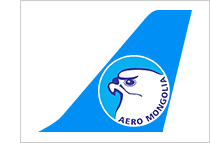 |
|
 |
 |
 |
Notification of free PCR test and antigen quantitative test for customers heading to Okinawa |
 |
In order to ensure for the safety of residency in Okinawa prefectures and those who are forced to move, the government will provide passengers on flights from Haneda, Narita, Chubu(Centrair),Itami, Kansai, and Fukuoka airports to airports in Okinawa prefectures by the end of February. We provide free PCR tests and quantitative antigen tests.
*Details |
|
 |
 |
 |
Important: Notice Concerning COVID-19 (Subject to continuing changes) |
 |
The Ministry of Justice, the Ministry of Health, Labor and Welfare and other government agencies are working in conjunction with airport companies to detect and stop the spread of the virus at Narita Airport.
When coming to the airport, please observe and cooperate with the following.
*Details |
|
 |
 |
 |
| Did you enjoy this edition? In writing this article, I studied a lot about ILS and learned the importance of it. I hope many of you have got interested in the facility that supports our airport all the time! Stay tuned for next month's issue! |
|
 |
|
|
|
|
|
|
 |
|
 |
|
|
|
